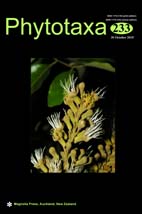Abstract
Alnus brembana Rota (1853: 102, 79) (Betulaceae) was described by Italian botanist Lorenzo Rota (1819−1855) within his flora of the province of Bergamo (Rota 1853). Since its publication, the treatment of this taxon as an autonomous species did not reach a general agreement among botanists, as it was often recongnized at different taxonomic ranks, e.g. a variety or a subspecies (see e.g., Regel 1865, Parlatore 1868, Cesati et al. 1872, Arcangeli 1882, Fiori 1923, Schmidt 1996), or a synonym of A. alnobetula (Ehrhart 1783: 193) Koch (1872: 625). Some contemporary authors (Landolt 1993, 2010, Martini et al. 2012) still recognize the species as a local endemic to the southern Alps. Most current European floras and checklists (see e.g., Ball 1964, Pignatti 1982, Greuter et al. 1984, Ball 1993, Aeschimann et al. 2004, Conti et al. 2005, Euro+Med 2006 onwards) do however list it as a synonym of A. alnobetula subsp. alnobetula or its synonym A. viridis (Chaix 1785: 70) Candolle in Candolle & Lamarck (1805: 304). Its separation from A. alnobetula is questionable, since, as stated by Landolt (1993) himself, transitional forms occur within their alleged distribution areas.

